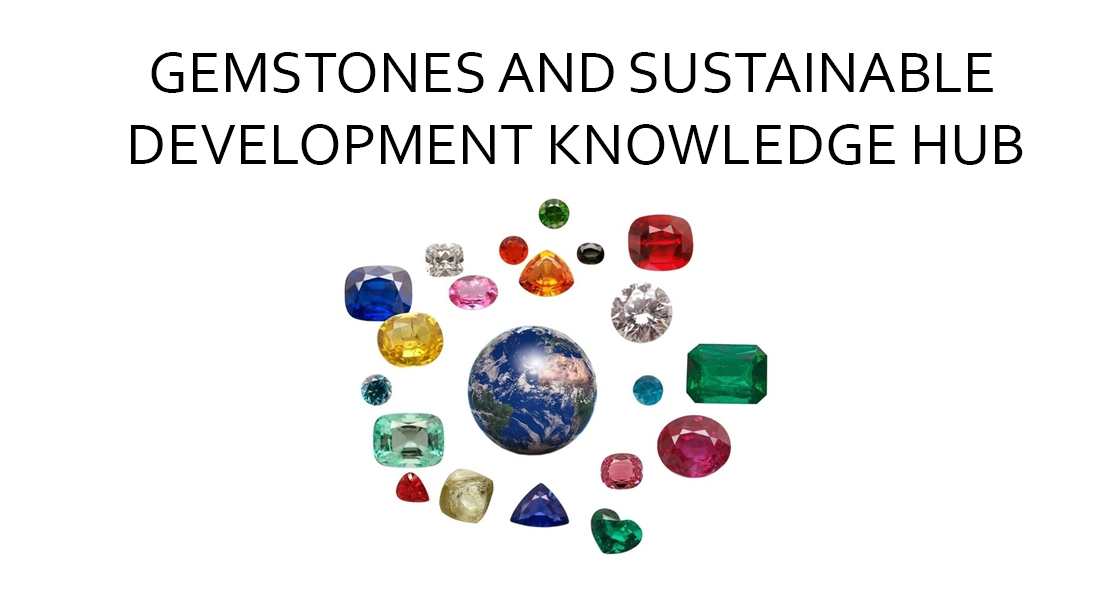Dr. Laurent Cartier recently published an article in 'the Episodes Journal' (part of IUGS- International Union of Geological Sciences) on the potential of developing a heritage status to raise awareness about and support gemstone producing areas worldwide. In regions such as the Mogok Stone Tract in Burma (Myanmar), strong traditions have evolved around the mining and processing of the different gemstones. It is proposed that specific criteria and a heritage designation scheme be developed for such regions that have been outstanding producers of gemstones, in some cases for many centuries. Much as with UNESCO’s World Heritage Site programme, the aim would be to preserve the traditions of these provinces and increase cultural, scientific and touristic interest in their gemstone resources as a way of contributing to sustainable development in these regions.
The full article can be read by following this link
Read moreWith its abundant resources in diamonds and coloured gemstones, Namibia has been unable to develop an internationally competitive coloured gemstone and related industry due to the fact that the sector’s value chain does not function in a way that maximises value addition. An uncoordinated supply of equipment to stone centers without a broader coloured stone sector growth strategy has constrained the growth of the sector. The main aim of this study was to establish the essential building blocks for the sector growth for the coloured gemstones and related industries.
Read moreFor the past 3 years, Lynda Lawson, a research associate in this gemstone knowledge hub, has been documenting and analyzing the lives of women involved in the sapphire value chain in Madagascar. Her work is based in Atsimo Andrefana in the South West of the country close to the established sapphire mining and trading areas around the towns of Sakaraha and Ilakaka.
Read moreThe Gemstones and Sustainable Development Hub is partnering with 'American Gem Trade Association' (AGTA) and 'Workplace Health Without Borders' (WHWB) in seeking to improve understanding of health issues in gemstone manufacturing and implementing suitable solutions. The pilot project will be carried out in Jaipur (India) at a number of different cutting facilities, starting early 2018.
Read moreBefore abundant sources of gold and silver were discovered in Mexico and Peru, pearls were the main riches that Spanish colonists exploited in the Americas. During his third trip to the Americas in 1498, Christopher Columbus discovered bountiful supply of pearls around the island of Cubagua, off the coast of today's Venezuela. The news about the existence of the highly prized commodity in the newly discovered seas quickly circulated inside and outside Spain. This gave rise to organized, and often conflict-ridden, ventures to harvest the Caribbean pearl beds.
Read moreThe magnificent Valley of Swat, surrounded by majestic mountains, contains an absolute corn bright in it. The Valley also holds one of the Asia’s largest deposits of emeralds. Similar to Colombian emerald, Swat emerald is well known for its unique green colors (ranging from medium to deep green) and for its distinctive smoothness and transparency.
Read moreThere is a diaspore mine (10,000 sq. km area) on Ilbira Mountains located in Mugla in southwestern Turkey. In a very minor portion of this mine, about a few kilometer long, gem-quality material is extracted.
Read moreAt the January 2017 Jewelry Industry Summit held in Tucson, Brian and Kendra Cook (Nature’s Geometry) discussed their efforts to promote sustainable mining in Brazil’s Bahia State. In cooperation with 2,500 miners from the region, the Cooks are developing a collective in Remedios, Novo Horizonte (figure 1). Plans to brand the region’s unique golden rutilated quartz will be supported by a warehouse and cutting facilities, as well as a visitor center. To provide food security for the population, the Cooks also intend to bring organic community farming to the area.
Read more3 Day Master Class in Gemology
Taught by Dr. Laurent Cartier
Read moreThe GEMHUB project launched in 2017 seeks to improve knowledge of coloured gemstones and sustainability issues linked to the mining, processing and trading of these precious resources.
Read more
